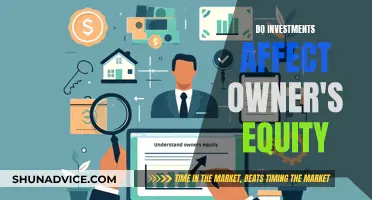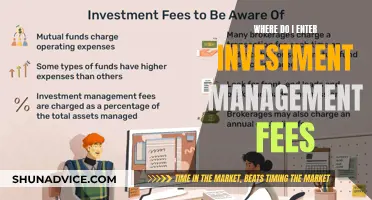
Exchange-traded funds (ETFs) are a great way to begin investing, especially for beginners. They are fairly simple to understand and can generate impressive returns without requiring much expense or effort. ETFs are a collection of securities that typically track an index, the most common of which is the S&P 500. They don't require large amounts of capital to invest in a range of stocks and can be a good way to dip your toes into the investing pool.
ETFs are a basket of investments like stocks or bonds that let you invest in many securities all at once. They often have lower fees than other types of funds and are traded more easily. They provide instant diversification by investing in many assets at once.
ETFs are also flexible, affordable and can be managed smoothly and quickly. You can choose anytime whether to stop investing or take a break. They are also a good option for those who want to save for the long term.
What You'll Learn

Passive vs. active ETFs
There are two basic types of ETFs: passive and active. Passive ETFs are also known as index funds and are designed to track a stock index like the S&P 500. Active ETFs, on the other hand, hire portfolio managers to actively select stocks and attempt to beat the market.
Passive ETFs
Passive ETFs are a popular strategy among investors who prefer a long-term, buy-and-hold approach. They tend to be lower-cost and more transparent than active ETFs. Passive ETFs follow a buy-and-hold strategy and aim to track a particular benchmark, such as the S&P 500 or Nasdaq. The fund manager of a passive ETF does not make allocation decisions beyond those that take place in the index itself. This provides a convenient and low-cost way to implement indexing or passive investment management, making it attractive to investors who wish to buy and hold securities for the long term.
Passive ETFs also tend to have lower management fees compared to active ETFs. Since there is no active manager trying to beat a benchmark, there are often lower administrative fees. Passive ETFs are known for their cost-efficiency and generally have lower management fees.
However, passive ETFs do not provide any room for outperformance. They aim to minimise tracking errors and closely mirror the returns of the chosen benchmark, so investors can expect returns that are similar to the chosen benchmark.
Active ETFs
Active ETFs, on the other hand, involve fund managers actively trading securities within an ETF to try to outperform a benchmark. Active fund managers use their own research and experience to select stocks they believe have the potential to beat the market. Active ETFs give investors the potential to beat the market and deliver higher returns.
Active ETFs tend to have higher management expenses compared to passive ETFs due to the costs associated with research, trading, security selection, and ongoing portfolio management.
While active ETFs have the potential to outperform passive ETFs, it is important to note that most actively managed funds fail to beat their benchmarks or passive ETF counterparts, especially over longer time horizons. Active ETFs also tend to have higher expense ratios compared to passive ETFs.
In conclusion, the choice between passive and active ETFs depends on your investment goals and style. Passive ETFs are generally suitable for investors seeking a long-term, buy-and-hold strategy, while active ETFs may be preferred by those seeking the potential for higher returns and are willing to take on more risk.
A Safe Investment: Post Office Savings Schemes
You may want to see also

Expense ratios
When considering investing in an ETF, it is essential to evaluate its expense ratio. The expense ratio indicates how much of your investment will be deducted annually as fees. For example, a 1% expense ratio means you will pay $10 in fees for every $1,000 invested. Keeping expenses low is crucial, as high fees can significantly erode your portfolio returns over time.
To calculate an ETF's expense ratio, divide the fund's total annual operating expenses by its average net assets. This calculation gives you a percentage that reflects the proportion of your investment that will go towards covering the fund's expenses.
It is worth noting that expense ratios for passively managed index funds, which aim to track a specific index, tend to be lower than those of actively managed funds. Actively managed funds, which hire portfolio managers, often come with higher fees. Additionally, ETFs that invest in foreign securities generally have higher expense ratios than those investing in US Treasury bonds.
When comparing expense ratios, it is important to consider the asset-weighted average of all funds rather than the simple average. This provides a more accurate representation of the fees most investors are paying.
Over the years, expense ratios have been declining, with many passive funds offering expense ratios below 0.10%. Some funds even have expense ratios of 0%, maximising investors' returns. When choosing an ETF, it is beneficial to seek out those with competitive expense ratios to minimise fees and maximise your investment growth.
In summary, expense ratios are an important consideration when investing in ETFs. By understanding how they work and comparing them across different funds, you can make more informed investment decisions and keep your costs low.
Social Security Investment Strategies: Maximizing Your Savings
You may want to see also

Dividends and DRIPs
DRIPs allow investors to automatically use their dividends to purchase additional shares of the issuing security, which is a convenient way to grow your investments over time. Many brokerages offer DRIPs for ETFs that pay dividends, and this option is now widely available. One benefit of DRIPs is that they eliminate the longer settlement time typically required by ETFs, as dividend reinvestment can be done at the market price on the payable date.
However, a disadvantage of automatic dividend reinvestment is that investors lose the ability to time the market. Manual dividend reinvestment provides more control but is less convenient and may incur commission charges.
When setting up a DRIP, investors can choose to reinvest dividends into purchasing additional shares or units of the company that paid the dividends or invest in a different security. It is important to note that DRIPs only purchase whole shares, and any leftover cash remains in the investor's account. Additionally, investors must be residents of Canada for Income Tax Act purposes to participate in a DRIP.
It is also worth noting that dividends from ETFs, whether reinvested or received as cash, are taxable.
529 Savings Plans: Smart Investment Strategies, per Forbes
You may want to see also

Understanding ETF taxes
If you buy ETFs in a standard brokerage account (not an IRA), you should know that they could result in taxable income. Any gains you make from selling an ETF will be taxed according to capital gains tax rules, and any dividends you receive will likely be taxable.
The tax treatment of ETFs and mutual funds is the same from the perspective of the IRS. Both are subject to capital gains tax and the taxation of dividend income. However, the ETF structure minimises capital gains until shares are sold, so the ultimate tax bill is less than what the investor would have paid with a similarly structured mutual fund.
In general, ETFs are more tax-efficient than mutual funds. This is because ETFs create and redeem shares using in-kind transactions, which aren't considered sales and therefore don't trigger taxable events.
Profits from the sale of ETFs held for under a year are taxed as a short-term capital gain, while those held for longer are considered long-term gains and are given a lower rate. If you sell an ETF and buy the same ETF after less than 30 days, you may be subject to the wash sale rule, which means you can't offset other capital gains.
ETFs are also subject to the 3.8% net investment income tax on sales.
ETFs that invest in currencies, metals, and futures have specific rules. They follow the tax rules for the underlying assets, which are usually taxed as short-term gains.
ETFs that pay dividends are taxed according to how long the investor has owned the fund. If the investor has held the fund for more than 60 days before the dividend was issued, the dividend is considered a "qualified dividend" and is taxed anywhere from 0% to 20% depending on the investor’s income tax rate. If the dividend was held for less than 60 days, the dividend income is taxed at the investor’s ordinary income tax rate.
Certain international ETFs, particularly emerging market ETFs, have the potential to be less tax-efficient than domestic and developed market ETFs. This is because many emerging markets are restricted from performing in-kind deliveries of securities. Therefore, an emerging-market ETF might have to sell securities to raise cash for redemptions, triggering a taxable event.
Leveraged/inverse ETFs have also proven to be relatively tax-inefficient. These funds generally use derivatives such as swaps and futures, which must be bought or sold and are treated by the IRS as 60% long-term and 40% short-term gains, regardless of the contract's holding period.
Commodity ETPs have a similar tax treatment because of the use of derivatives.
The most tax-efficient ETF structure is the exchange-traded note (ETN). ETNs do not hold any securities, so there are no dividend or interest rate payments while the investor owns the ETN. The investor is only subject to a long-term capital gains tax when they sell the ETN.
Invest Wisely to Secure Grandkids' College Education
You may want to see also

Pros and cons of ETFs
Exchange-traded funds (ETFs) are a powerful type of investment that can be ideal for beginners. They are fairly simple to understand and can generate impressive returns without much expense or effort.
Pros:
- Lower costs: ETFs tend to have lower costs than other types of investments, such as mutual funds, due to their passive management and lower expense ratios.
- Diversification: ETFs typically offer diversified investments, allowing investors to spread their risk across multiple companies or sectors. This helps to reduce the impact of market swings.
- Tax efficiency: ETFs are more tax-efficient than mutual funds as they realise fewer capital gains, resulting in lower taxes for investors.
- Liquidity: ETFs are highly liquid and can be bought or sold during market hours, providing quick access to investment capital.
- Risk management: ETFs offer various risk management opportunities, such as market, stop-loss, and limit orders.
- Flexibility: In addition to regular trading hours, ETF investors can wager on declining markets by short-selling ETFs.
Cons:
- Costs: While ETFs are generally more affordable than mutual funds, investors still incur trading fees and expense ratios. These costs depend on the brokerage firm and type of ETF.
- Limited diversification: In some sectors or foreign stocks, ETF investors might be limited to large-cap stocks, reducing their exposure to potential growth opportunities in mid- and small-cap companies.
- Lower returns: ETFs might be less risky than individual stocks, but the potential returns may also be lower.
- Challenges for hands-on investors: Investors who want to be hands-on and selective about their investments might find ETFs challenging. This is because ETFs may contain stocks from companies that do not align with their personal values or sustainability goals.
- Partial shares: Depending on the brokerage firm, investors may not be able to buy partial shares of ETFs, making investing more complicated.
Overall, ETFs can be a great option for those looking for a low-cost, diversified, and flexible investment. However, it's important to consider the potential drawbacks and ensure that ETFs align with your investment goals and strategies.
Maximizing Your Savings Account: A Guide to Smart Investing
You may want to see also
Frequently asked questions
An exchange-traded fund, or ETF, is a basket of investments such as stocks or bonds. ETFs let you invest in many securities all at once. They often have lower fees than other types of funds, and are traded more easily, too.
You'll need a brokerage account before you can buy or sell ETFs. Then, choose your first ETFs and let them do the hard work for you.
Advantages to investing in ETFs include providing exposure to a variety of stocks, bonds, and other assets, typically at a minimal expense. They also take the guesswork out of stock investing and are more liquid than mutual funds. However, ETFs are often low-cost but not free, and since they own a diverse assortment of stocks, they don't have as much return potential as buying individual stocks.
It's important to be aware that while costs are generally lower for ETFs, they can vary widely from fund to fund. Even ETFs tracking the same index can have different costs. You should also consider the fund's size, TER, accumulation or distribution, currency, and exchange listing.







